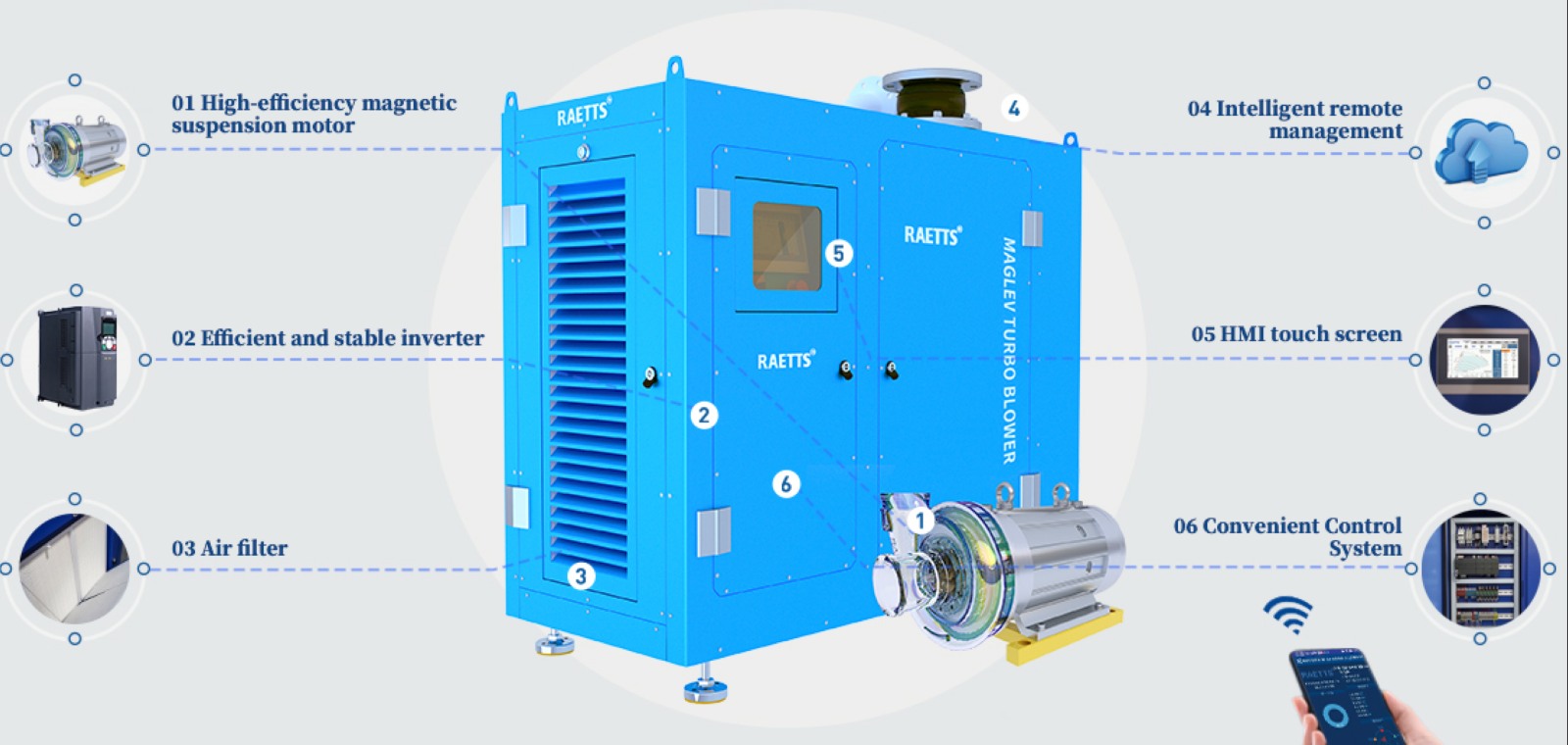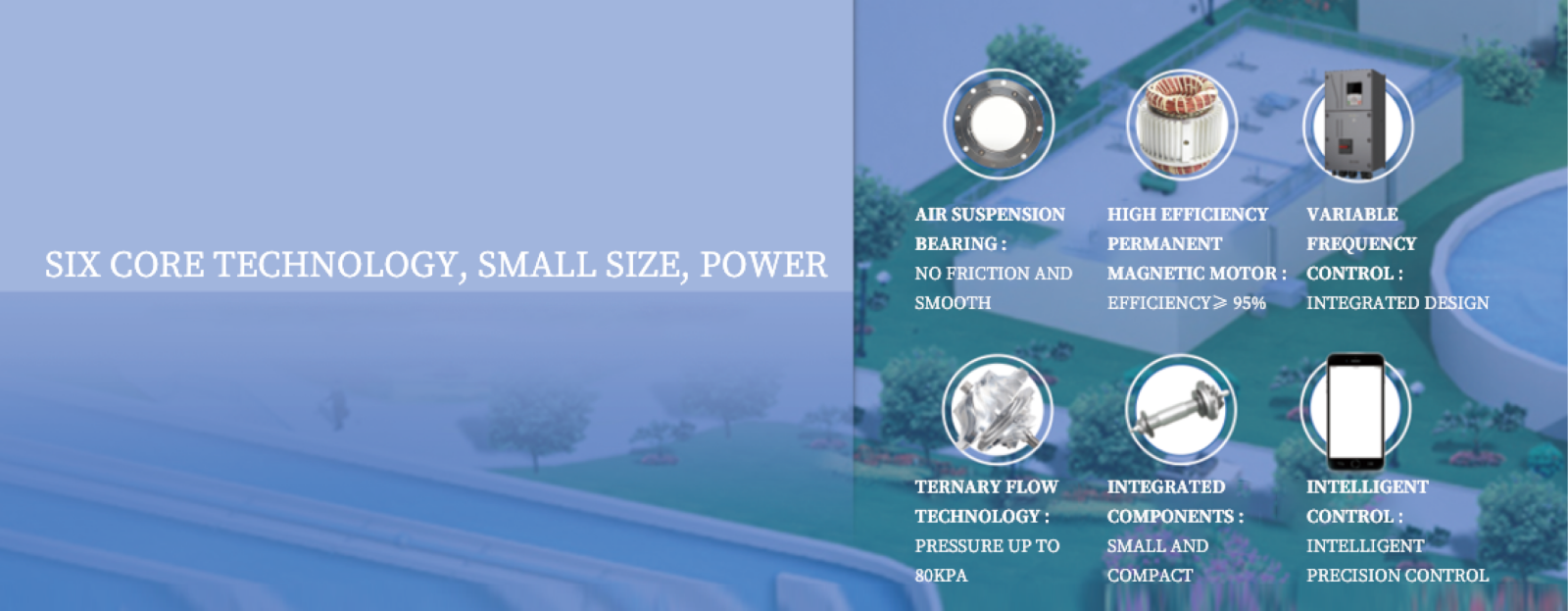RAETTS is located in Dongguan, Guangdong Province, the world’s leading manufacturing city and the hinterland of Guangdong-Hong Kong-Macao Greater Bay Area. The target markets are more than 60 countries, such as the United States, Europe, Kiribati,Pakistan,Algeria,Somalia,Guatemala,Western Sahara,Holy See (Vatican City),Aruba,Tanzania, Southeast Asia and the Middle East.We have own factory named with more than 20 years of production experience, it is specialized in producing Blower Packages for Pneumatic Conveying Systems,low pressure blowers for kiln process in cement industry,Centrifugal Blowers for Textile Industry,blower turbo,cement blower systems,industrial blower for fermentation industry and so on.
If you are interested in any of our products please feel free to contact us. We are looking forward to establishing successful business relationships with new clients around the world in the near future.

| Product name | Centrifugal Blowers for Textile Industry |
| Keyword | Blower Packages for Pneumatic Conveying Systems,low pressure blowers for kiln process in cement industry,Centrifugal Blowers for Textile Industry,blower turbo,cement blower systems,industrial blower for fermentation industry |
| Place of Origin | China |
| Feature | RAETTS air bearing turbo blower is a brand-new concept blower, which integrates the main core technologies such as “air suspension bearing”, “permanent magnet ultra-high-speed motor”, “high-precision aviation-grade impeller”, and creates a new era of ultra-high efficiency ,low noise and low energy consumption. |
| Dimensions | 732mm*791mm*836mm, (Contact us for specific information to confirm) |
| Applicable Industries | high tower desulfurization, etc. |
| Weight | 551kg |
| delivery date | the common delivery time will be 30-40 days. |
| terms of paymen | RAETTS accept payment by T/T(30% advance payment,70% before shipment) |
| Life span | 16 years (Contact us for specific information to confirm) |
| After-sale service | RAETTS warranty time for air bearing blower and maglev turbo blower is 24months,for high speed centrifugal blower is 12 months. |
| Advantage | We keep good quality and competitive price to ensure our customers benefit |
| Packing | 805x812x898mm(Contact us for specific information to confirm) |
| OEM/ODM | Customization Service Provided |
| Sales country | All over the world for example:Kiribati,Pakistan,Algeria,Somalia,Guatemala,Western Sahara,Holy See (Vatican City),Aruba,Tanzania |
| MOQ | 8pcs(Contact us for specific information to confirm) |
| production capacity | production capacity RAETTS production quantity for air bearing blower and maglev turbo blower is about 200pcs/month,for high speed centrifugal blower is about 700pcs/month. |
| raw materials | RAETTS air blower impeller in made of aluminum alloy,enclosure material is carbon steel,rotor material is cast iron.If customers need other special materials,we can also customized according to customers requirements |
| technology | RAETTS air bearing blower technology is originated from South Korea and maglev turbo blower technology is originated from Germany.RAETTS also have R&D team from Xi’an Jiaotong University |
| quality system | RAETTS has quality management system certificate ISO9001:2015 and enviromental management system certificate ISO14001:2015 |



Centrifugal Blowers for Textile Industry services FAQs Guide
Are you looking for a quick review guide about Centrifugal Blowers for Textile Industryservices?
An ultimate FAQ buying guide is available to help you.This guide contains all the information about all the important facts, figures, and various processes regarding Centrifugal Blowers for Textile Industry services.
Let’s continue!
2.What is the Maximum Pressure and Flow Rate of a Turbo Blower?
3.About Centrifugal Blowers for Textile Industry overseas warehouse
4.What Safety Features Should I Look for in a Turbo Blower?
5.About Centrifugal Blowers for Textile Industry patent
6.What Noise Levels Can I Expect from a Turbo Blower?
7.What Industries Benefit Most from Using Turbo Blowers?
8.Is a Turbo Blower More Efficient at Higher or Lower Speeds?
9.Can a Turbo Blower Handle Abrasive or Corrosive Gases?
1.About Centrifugal Blowers for Textile Industry raw material procurement system
RAETTS uses ERP management system to manage the suppliers and follow the raw materials production state.
2.What is the Maximum Pressure and Flow Rate of a Turbo Blower?
We should have a stable supply chain and logistics capabilities, and provide customers with high -quality, low -priced Centrifugal Blowers for Textile Industry products.
The maximum pressure and flow rate of a turbo blower can vary depending on the specific model and manufacturer. However, in general, turbo blowers can achieve pressures up to 15 psi (1 bar) and flow rates up to 10,000 cubic feet per minute (cfm) (283 cubic meters per minute). Some high-performance turbo blowers may be able to achieve even higher pressures and flow rates. It is important to consult the manufacturer’s specifications for the specific turbo blower being used to determine its maximum pressure and flow rate capabilities.
3.About Centrifugal Blowers for Textile Industry overseas warehouse
RAETTS is cooperating with global distributors,some distributors has stock or sample in their warehouse.For now,RAETTS has Germany factory warehouse,and we are building the USA warehouse.
4.What Safety Features Should I Look for in a Turbo Blower?
As one of the top Centrifugal Blowers for Textile Industry manufacturers in China, we take this very seriously.
1. Overload Protection: This feature automatically shuts off the blower if it becomes overloaded, preventing damage to the motor and other components.
2. Thermal Protection: This feature monitors the temperature of the blower and shuts it off if it becomes too hot, preventing overheating and potential fire hazards.
3. Ground Fault Circuit Interrupter (GFCI): A GFCI is a safety device that shuts off the power to the blower if it detects a ground fault or electrical leak, preventing electric shock.
4. Lockout/Tagout Capability: This feature allows the blower to be locked out and tagged out during maintenance or repair, preventing accidental start-up and ensuring the safety of maintenance workers.
5. Low Noise Level: Look for a turbo blower with a low noise level to protect your hearing and reduce noise pollution in the surrounding area.
6. Vibration Isolation: This feature reduces the vibration of the blower, making it safer to operate and reducing the risk of damage to surrounding structures.
7. Safety Guards: Some turbo blowers come with safety guards to prevent accidental contact with moving parts, reducing the risk of injury.
8. Emergency Stop Button: An emergency stop button allows for quick and easy shut-off in case of an emergency or malfunction.
9. Anti-Slip Feet: Look for a blower with anti-slip feet to prevent it from moving or tipping over during operation, ensuring the safety of the operator.
10. UL or CSA Certification: Make sure the turbo blower has been certified by a reputable organization such as UL (Underwriters Laboratories) or CSA (Canadian Standards Association) to ensure it meets safety standards.
5.About Centrifugal Blowers for Textile Industry patent
RAETTS won 5 Patents for invention, 18 Patents for utility models,3 Design patents +2 software copyrights,Dozens of patents under application,and formulated 1 Industrial standard and 2 Technical standards.
6.What Noise Levels Can I Expect from a Turbo Blower?
We operate our Centrifugal Blowers for Textile Industry business with integrity and honesty.
The noise levels of a turbo blower can vary depending on the specific model and manufacturer. However, on average, a turbo blower can produce noise levels between 70-90 decibels (dB) at a distance of 3 feet. This is comparable to the noise level of a vacuum cleaner or a busy street. Some newer models of turbo blowers may have noise levels as low as 60 dB, which is similar to the noise level of a normal conversation. It is important to note that the noise level can also be affected by the installation location and any additional soundproofing measures that may be in place.
7.What Industries Benefit Most from Using Turbo Blowers?
We focus on our customers’ needs and strive to meet their expectations, so we take this very seriously.
1. Wastewater Treatment: Turbo blowers are commonly used in wastewater treatment plants for aeration and mixing processes. They provide high air flow rates and energy efficiency, making them ideal for this industry.
2. Chemical Processing: Turbo blowers are used in chemical processing plants for various applications such as air agitation, gas compression, and vacuum generation. They are preferred for their high reliability and low maintenance requirements.
3. Power Generation: Turbo blowers are used in power plants for combustion air supply, cooling, and ventilation. They are also used in gas turbine power plants for air compression.
4. Food and Beverage: Turbo blowers are used in the food and beverage industry for aeration, cooling, and drying processes. They are also used for pneumatic conveying of food products.
5. Pulp and Paper: Turbo blowers are used in the pulp and paper industry for aeration, ventilation, and drying processes. They are also used for paper machine vacuum systems.
6. Mining: Turbo blowers are used in the mining industry for ventilation, dust control, and pneumatic conveying of materials. They are preferred for their high efficiency and low maintenance requirements.
7. Oil and Gas: Turbo blowers are used in the oil and gas industry for gas compression, vapor recovery, and flare gas recovery. They are also used for pneumatic conveying of materials in refineries and petrochemical plants.
8. Pharmaceutical: Turbo blowers are used in the pharmaceutical industry for air agitation, drying, and sterilization processes. They are preferred for their high purity and low noise levels.
9. Textile: Turbo blowers are used in the textile industry for air supply in spinning, weaving, and dyeing processes. They are also used for pneumatic conveying of fibers and fabrics.
10. Aquaculture: Turbo blowers are used in aquaculture for aeration and oxygenation of water in fish and shrimp farms. They are preferred for their energy efficiency and low noise levels.
8.Is a Turbo Blower More Efficient at Higher or Lower Speeds?
We pay attention to the transformation of intellectual property protection and innovation achievements. Your OEM or ODM order design we have a complete confidentiality system.
A turbo blower is more efficient at higher speeds. This is because the higher the speed, the more air is being pushed through the blower, resulting in a higher volume of air being moved. This increased volume of air allows for more efficient operation and better performance. Additionally, at higher speeds, the blower is able to overcome any resistance or back pressure in the system more easily, resulting in a more efficient operation.
9.Can a Turbo Blower Handle Abrasive or Corrosive Gases?
We have established a good reputation and reliable partnerships within the Centrifugal Blowers for Textile Industry industry.
It depends on the specific design and materials used in the turbo blower. Some turbo blowers are designed to handle abrasive or corrosive gases, while others may not be suitable for these types of gases. It is important to consult the manufacturer’s specifications and recommendations before using a turbo blower with abrasive or corrosive gases. Additionally, regular maintenance and proper cleaning may be necessary to ensure the longevity and performance of the turbo blower when handling these types of gases.
Tag:high speed turbo blower,combustion support air blower,turbo charged leaf blower,turbo blower for cement industry,centrifugal blower for mine material transportation,Energy-efficient turbo blowers ,turbine blower








